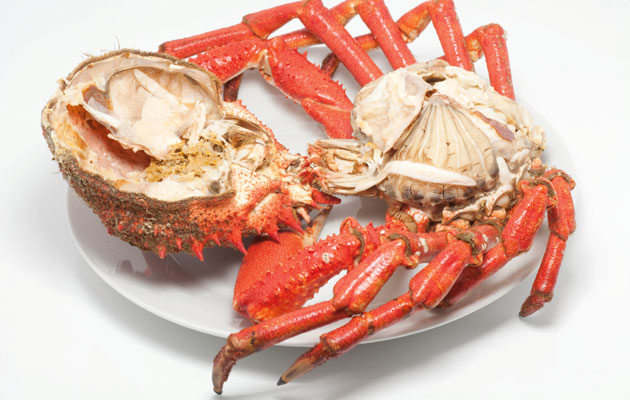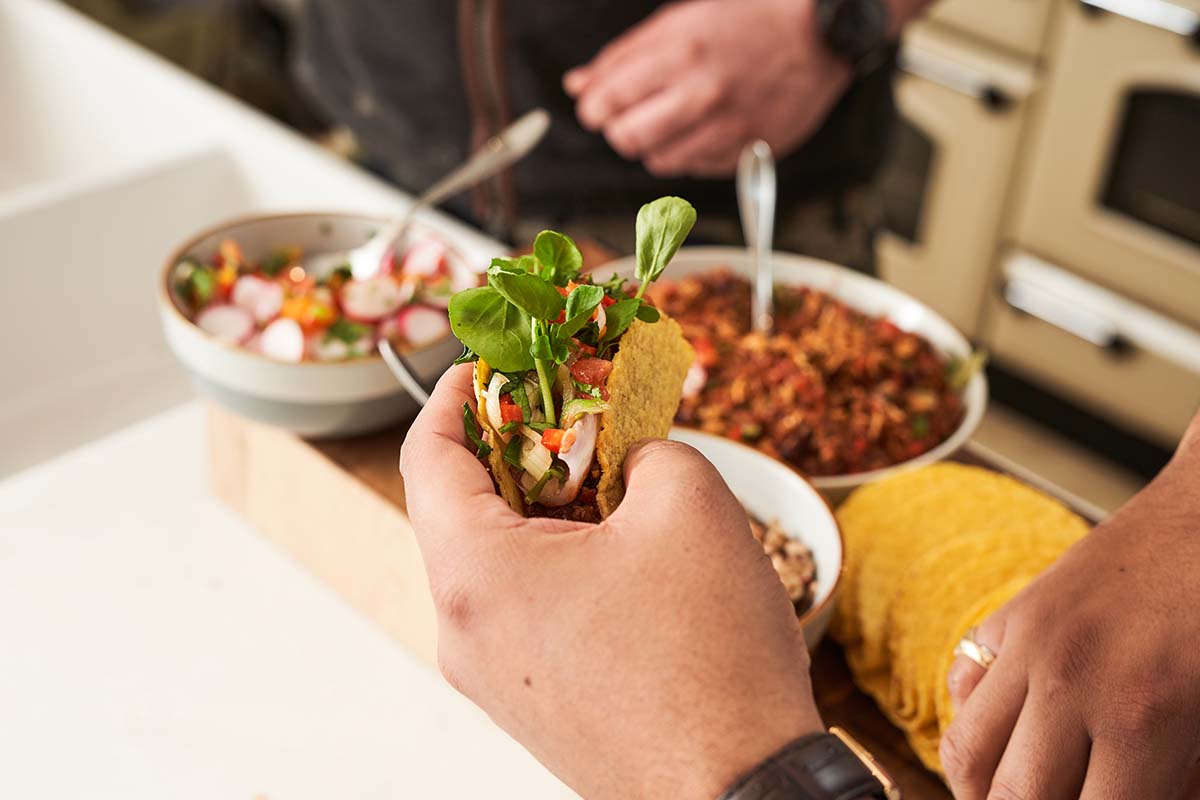Hook, line and pincher: crab from pier to plate
For those without any shoot dates until October, Paul Quagliana's brief guide to UK spider crabs shows how to catch a crab

While there is always something to do with firearms all year round, spring and summer can be a slack time for some of us, so the sportsman has to turn his hand to other areas to keep himself occupied. I have had a passion for sea fishing since childhood and the multitude of sea creatures around our shores have provided endless fascination — both in a culinary and visual sense.
Crustaceans, in particular, hold a certain appeal. They are invariably good to eat, and incredibly intricate creatures. Some possess great strength, with their movements dictated by a complex system of hinges and joints. The spider crab is no exception. Until I moved to Dorset from the North, I was blissfully unaware that there were spider crabs in our waters. They might not reach the huge size of Japanese ones, but they are quite imposing in their own right. In the spring they move inshore in large numbers along the south and west coasts, and, while a menace to beach fishermen through not just stealing bait, but cutting off the hooks, they make excellent eating if you can catch one. They are sometimes dragged ashore ensnared in an angler’s line, but a drop-net off a pier is the easiest way of ensuring a crab buttie. Ask in your local tackle shop if the crabs are present in your area and give catching them a go.
How to catch crab
DIY drop-nets
You can make your own drop-net using a bicycle wheel with the spokes removed and netting added. Or you can buy them fairly cheaply from tackle shops. Buy the largest you can get — though, curiously, a small one I found at a car boot sale is often the most successful for me. Try to pick one that has a plastic ring around the outside that protects the netting from abrasion when it is dragged up the side of a pier. Unless you are familiar with the pier you are visiting, make sure you have plenty of strong cord attached to the net — they don’t always have enough when you buy them. The cord needs to be long enough for the net to reach the seabed and be tied round pier railings. Paracord from an army surplus store or cord from yacht chandlers is ideal.
Taking the bait
There is an old tried and tested saying that you should use rancid bait for lobsters and fresh bait for crabs. I use fresh bait, and have never caught a lobster. If you beach fish during the winter you may be plagued by whiting, pouting and poor cod. These are worth freezing and saving as crab bait. Oily fish such as mackerel is also ideal.
To the wire
First, thread a length of wire about a foot long through a couple of inches of mesh in the bottom of the net. Slide a heavy fishing weight — 8oz at least — down one end of the wire, and twist the two lengths together near the lead to prevent losing the lead when you fling the net out, or simply use a heavy stone.
Now, take your bait and twist the ends of wire tightly around it a few times to prevent the crabs wandering off with it. Hurl the net out a distance from the edge of the pier to prevent it getting snagged against the side when you lift it. The fishing weight should sink the net. You may need a heavier weight if there is any degree of tidal current. Make sure the cord is slack so that the net sits flat on the seabed. If it is tight, the net may be at an angle and the crabs will crawl underneath to get at the bait. They may also start cutting through the mesh with pincers and jaws. It is annoying to lift the net only to see a crab hanging on underneath. They relinquish their grasp just as the net reaches the surface, then begin a slow-motion descent to the depths. The crabs seem most active in daylight and possibly at slacker periods of the tide, so stick out the mission for several hours and don’t quit too soon.
Using a couple of nets means an unbroken scent trail if you lift each every few minutes. As long as one remains in the water at any one time, the scent trail from the bait will be more or less constant. Once the crabs arrive, the nets can be lifted every five to 10 minutes. Small crabs should be lobbed back over the side.
The minimum landing sizes are 12cm across the carapace for females and 13cm for males. While I have yet to meet a crab enforcement officer, there is no point in keeping any undersized species. The rules are there for a reason, and extracting meat from large spider crabs is fiddly at the best of times — a small one is pointless. Last but not least, with your trap baited and weighted it is time to launch. Just remember to tie the other end of the cord to the railings.
Crab revenge
Boiling crabs alive upsets many people but there are ways of making it more humane. Crabs can be killed using a strong knife inserted through various chinks in their armour, but placing them in a cold fridge for several hours is another method. It seems to render them lifeless, perhaps because it brings on a form of hibernation.
Crabs are often covered in weed or algae. Attempting to scrub this off is pointless. Take great care when handling crabs; the males have much larger pincers and one once got hold of my finger and crushed down so hard it turned the nail black. Crab revenge. Who can blame it?
Make sure you have a large enough metal pot of water, brought to a rolling boil, and drop the crab in. After being thoroughly “fridged” there is generally, and thankfully, little reaction from the crab. Around 15 to 20 minutes per crab is normally about right — a little longer for really large ones.
Extracting the meat gets easier with practice and I normally have two bowls ready — one for the brown meat, and one for the white. The brown meat goes well simply spread on some good, thick buttered brown bread. The white meat likewise, or it can be used in soups and fish stews. Consult your recipe books.
Cracking the claws with the back of a knife takes practice. Too little force and you will be tapping all day, too much and most of it will end up on the ceilings and walls. But it is worth it in the end. Don’t use your teeth for cracking the legs, as it can lead to a painful chat with your dentist.








